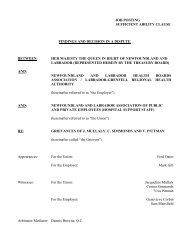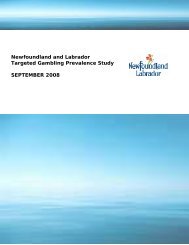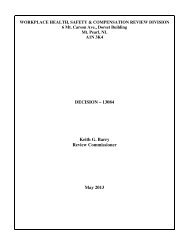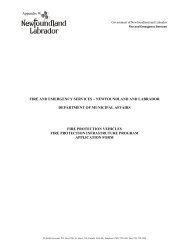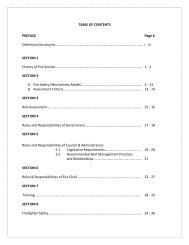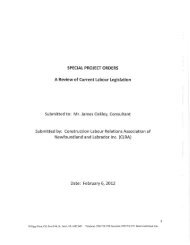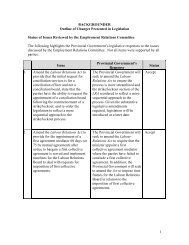Basic Level Pre-Course Reading
Basic Level Pre-Course Reading
Basic Level Pre-Course Reading
Create successful ePaper yourself
Turn your PDF publications into a flip-book with our unique Google optimized e-Paper software.
Chapter 3<br />
CBRN Assessment and Incident Recognition<br />
3. CBRN ASSESSMENT AND INCIDENT RECOGNITION<br />
After completing this chapter, participants will be able to:<br />
• describe the indicators of a possible CBRN incident;<br />
• recognize unusual trends which may indicate a CBRN incident;<br />
• describe signs and symptoms of chemical agent exposure and their onset;<br />
• describe signs and symptoms of biological agent exposure and their onset;<br />
• describe signs and symptoms of radiological exposure and their onset;<br />
• recognize a potential CBRN agent dissemination device and how it may be used by terrorists;<br />
• describe indicators that raise suspicion of a package; and,<br />
• describe guidelines for dealing with a suspicious package incident.<br />
The purpose of this chapter is to familiarize participants with the signs and indicators<br />
that might lead a responder to suspect a CBRN terrorist incident. Although it may be<br />
difficult to identify if the incident was accidental or intentional, it is important that<br />
responders recognize the potential threat and rethink some of the normal day-to-day<br />
operating procedures.<br />
3.1 Indicators of a CBRN Incident<br />
In December, 1984, mechanical failure caused an explosion at the Union Carbide<br />
chemical plant in Bhopal, India that resulted in the release of methyl isocyanate, a<br />
deadly gas, used in the manufacture of pesticides. The gas formed a cloud that killed<br />
2500 people while another 50 000 – 100 000 became ill. Trees and plants in the area<br />
became yellow and brittle. This example clearly demonstrates that signs and<br />
symptoms, accompanied by an explosion, do not necessarily mean a terrorist incident<br />
has occurred. If this type of accident happened today, there is little doubt that terrorism<br />
would be suspected immediately. In some cases, there may be very subtle or even<br />
obscure evidence of terrorist involvement that might surface only weeks, months, or<br />
years later.<br />
During September 9–21 st , 1984, in Dalles, Oregon, several hundred people fell ill with a<br />
form of food poisoning called Salmonella typhimurium. The cause of the food poisoning<br />
was attributed to bacteria in the salad bars of ten local restaurants. The fact that the<br />
Salmonella poisoning was a deliberate attack planned and executed by a nearby cult<br />
was only learned a year later, as the result of infighting among the cultists. This incident<br />
clearly demonstrates that a terrorist attack can also take on the appearance of a natural<br />
occurrence, and be overlooked.<br />
For many first responders, this raises the question of how their response would differ.<br />
To ensure responder safety and the safety of others, suspicious incidents should be<br />
treated as intentional acts of terrorism until such time as they are determined otherwise.<br />
Responses to such incidents should be exactly the same, no matter what the cause.<br />
CBRN First Responder Training Program<br />
16<br />
<strong>Basic</strong> <strong>Level</strong> <strong>Course</strong>



